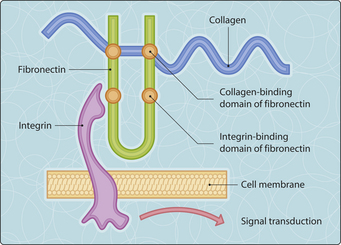Chapter 1 Growth and differentiation
The characteristics of a tissue depend on the balance between the rate at which cells proliferate, the type of differentiation they exhibit and the rate at which they die. Except for the germ cells of the ovary and testis, which divide by meiosis, the cells of the human body proliferate by mitotic division, in which a full copy of the genome is distributed into each of the two daughter cells. Apoptosis is programmed cell death; it is involved in many different physiological and pathological processes (Ch. 10).
Control of proliferation, differentiation and apoptosis
The principal way in which cells communicate with their surroundings is by receptors. The binding site of a receptor is capable of binding in a highly specific way to another molecule (or part of a molecule) called a ligand. When a receptor binds to its ligand, the tertiary structure of the receptor changes. This change in structure is associated with the initiation of biochemical events inside the cell that act to control its metabolism or the expression of genes. An example is the interaction between an integrin receptor and fibronectin, which is a way in which cells interact with the extracellular matrix (Fig. 3.1.1). The integrins are a member of the family of transmembrane receptors called cell adhesion molecules. Fibronectin is an extracellular matrix protein that binds to collagen and other matrix molecules. It also binds to, and acts as a ligand for, integrin. When this interaction occurs, the conformational change in the intracellular integrin domain promotes interaction between the integrin molecule and components of the cytoskeleton and also initiates the activation of second messengers that can have a variety of effects, including control of progression through the cell cycle.

Fig. 3.1.1 The integrins are a group of transmembrane receptors important in transmitting growth and differentiation signals from the extracellular matrix. Here, integrin binds fibronectin, a matrix molecule that can bind to both collagen and integrin. The resulting conformational change in integrin activates intracellular signal transduction.
Stay updated, free articles. Join our Telegram channel

Full access? Get Clinical Tree






